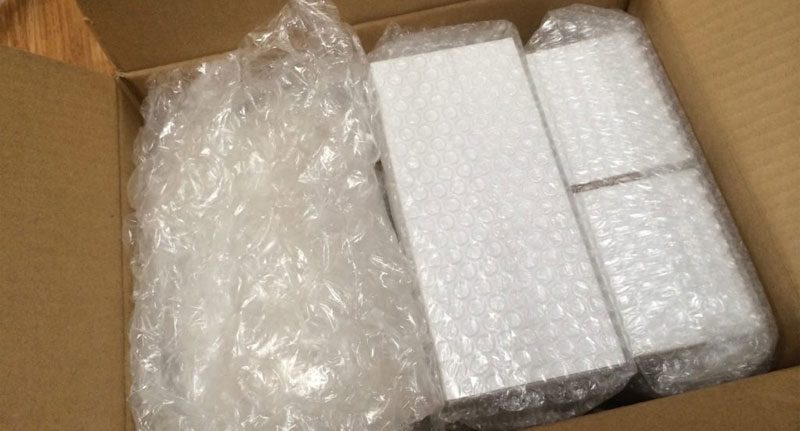One of the things people often dread about moving is packing sentimental, fragile, and expensive items. It’s a nightmare to discover that your valuable items have been broken or damaged in transit. Do you wish you know how to pack fragile items when moving?
What would you do if you find your great Aunt’s fine china family heirloom has shattered into 1000 pieces. Luckily, you don’t need to worry about your fragile items breaking anymore.
Keep reading for tips on how to pack fragile items when moving:
Pack In Advance
One of the most common reasons items get damaged is due to not allowing enough time to pack before moving day. Packing breakable items take time, and trying to rush or cut corners is only asking for disaster. Start packing weeks or months before your moving day, and allow yourself time to securely and adequately pack all of your fragile items.
Have The Correct Packing Tool
Without the correct tools and supplies, it doesn’t matter how long you take to pack; your fragile items won’t be adequately protected.
To properly pack fragile items when moving home, you will need:
• Sturdy boxes in a variety of different sizes
• Bubble Wrap
• Scissors
• Packing Paper
• Packing Tape
• Cardboard
Now that you’ve allowed plenty of time and have all the right tools, it’s time to start packing your fragile items. Be sure to prepare and pack each item slowly. The extra time you take will make sure your belongings arrive securely and without being damaged or broken.
Packing Common Fragile Items
Glasses
Wrap each glass individually using packing paper. Also, make sure that there is no empty space by placing crumpled paper inside any large glasses.
Use either small or medium boxes and line them with a generous amount of packing paper on the bottom and top.
Be sure also to use paper to layer any space around the glasses to prevent them from moving. The heaviest glasses should be on the bottom and the lighter glasses on the top of the box.
Plates
Plates are best packed in small to medium boxes vertically. Line the bottom and top of the boxes with packing paper. Wrap each plate individually with bubble wrap, and place paper between each plate. Secure the box with packing tape, and remember not to overpack the box!
Picture Frames
Place picture frames in small or medium boxes and line them with paper. Place the frames in the box standing up and put crumpled paper placed between each frame to add extra padding.
Also, use packing paper to wrap the frames. Add more packing paper in the box at the top of the frames. This will make sure they won’t move around.
Any picture frames which are larger than 90 cm should instead be plastic wrapped, so they are secure, and separately moved using a moving blanket.
Lamps
Dismantle the lamp shade and put it in a box with lots of paper, flat side down. Take the lamp base and place it in a large separate box. Use bubble wrap to offer extra protection. Take the light bulb and wrap it in bubble wrap, and store it separately.
Specialised Items
For any items which have an odd shape, or are large, fragile items it’s important to first take into account the shape and size of the item. Also look for any pieces which are sticking out, or have handles which may break easily.
First, wrap the item completely in bubble wrap. Then secure it with tape. Next, place it on a piece of cardboard, and add more cardboard on top of the item. Next, bend the cardboard pieces so that they join together, and, secure them with tape.
Don’t skimp on tape. It’s better to go overboard than not to have enough. If required, wrap the item completely in tape. The most important thing is that it is cozy and secure.
Next, line a box with paper and put the item carefully into the box. Fill in any gaps with crumpled paper. Finally, make sure you tape the box firmly.
What Not To Do:
A lot of people use small blankets, old towels, paper towels, or newspapers to pack their fragile items.
However, it’s best to avoid using any of these items to pack.
-
Newspapers can be very dirty, leaving a mess as soon as you move into your new home.
-
Old towels or small blankets easily slip, and packing tape won’t keep them in place.
-
Paper towels offer very little protection as they are not sturdy or reliable.
With how expensive and sentimental your fragile items are, it’s highly recommended to invest in spending some money on proper packing tools and materials.
Otherwise, removalists companies offer professional packing services, where they will pack all of your fragile items for you, and provide all the required packing materials, saving you time and money.
Label Fragile Items
After going to all of the effort to pack your fragile items securely, there’s still one last step.
Label all boxes which contain fragile items as ‘FRAGILE’.
Besides labelling boxes as fragile, something which is often missed is to indicate which way the box needs to be moved. You should mark each box as “This Side Up ⬆”.
When your removalists arrive, let them know which boxes contain fragile items. Doing so will ensure they take extra special care while transporting them to ensure no damage occurs.
By following this how-to guide, you can rest assured that your fragile and expensive items will arrive at your new home in perfect and undamaged condition.
Still not comfortable packing your fragile items? No need to worry! Local And Interstate Removals are professional and experienced removalists who have been expertly trained to handle and move fragile items with care and treat your precious belongings as if they were our own.
We offer professional packing services to eliminate any risk of damage to your fragile items. As every move is different, our services can be tailored to suit your needs.
For extra peace of mind, we also provide full insurance for every stage of the removals process. Contact us today to safely and securely move your fragile items by phone 1300 705 705 or email [email protected].












